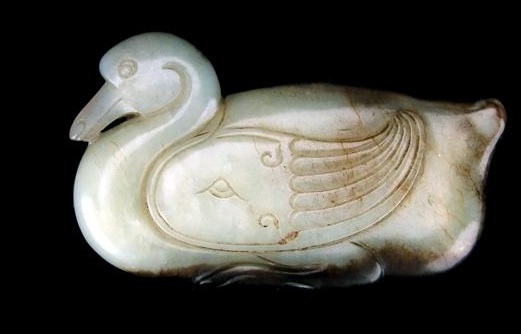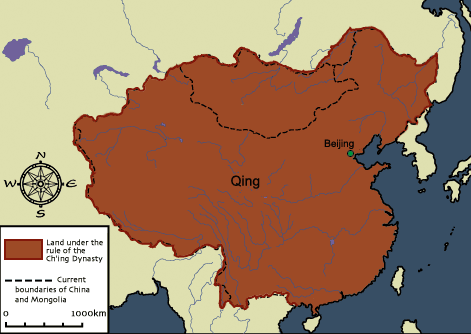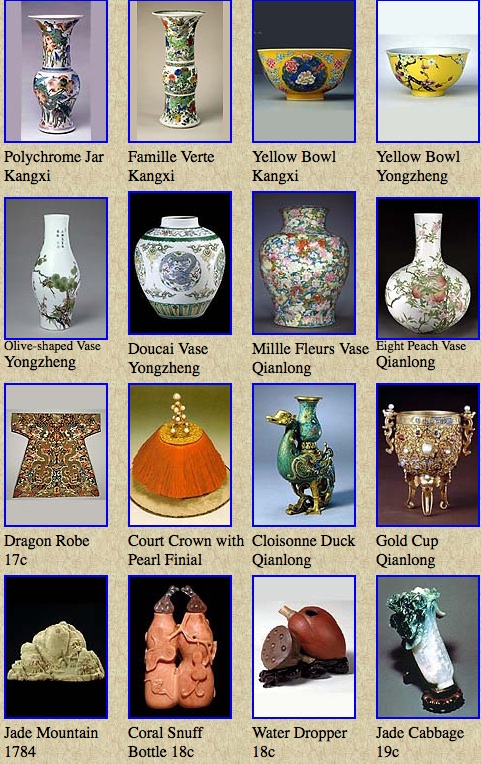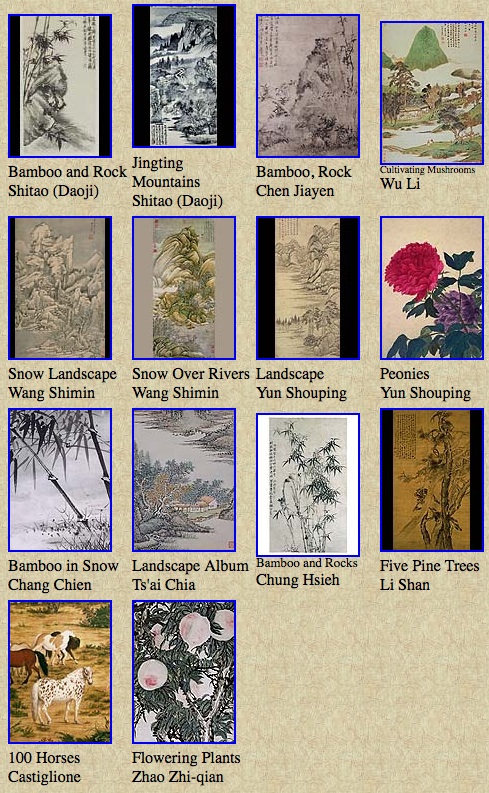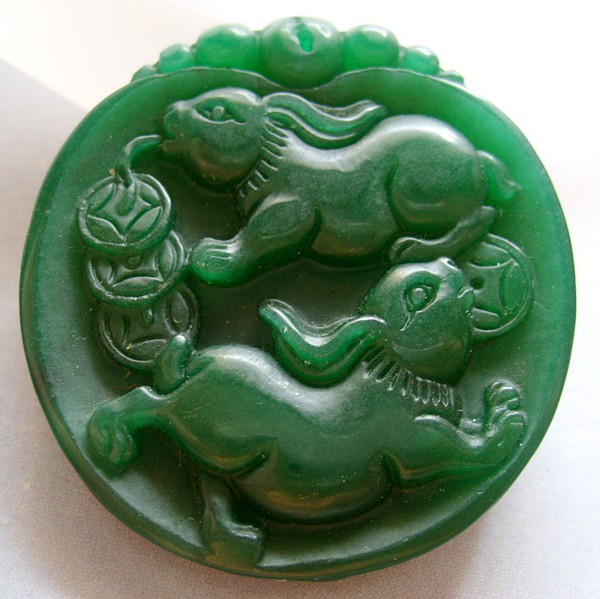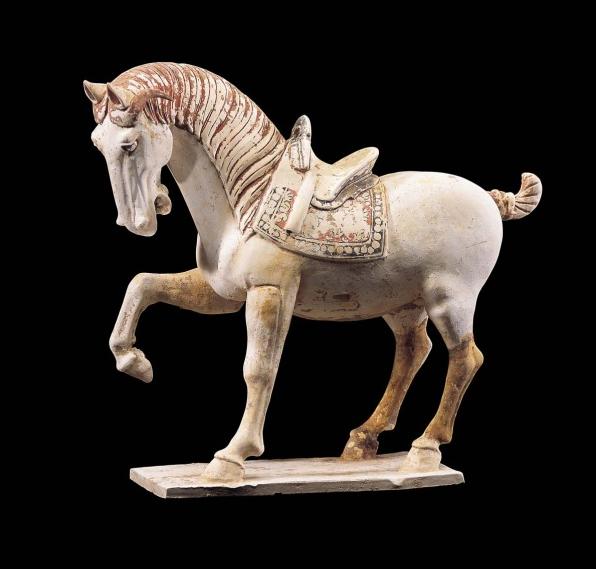During the long years of this dynasty many treasures were stolen or destroyed and today China wants them back. Therefore this is inflating the price of artefacts being auctioned or sold privately.
For example only lately (19th October 2010) China has renewed a call for the return of relics looted from the Old Summer Palace in Beijing 150 years ago, an act seen as a cause of national humiliation at the hands of Western armies.
The Yuanmingyuan, a summer resort garden for the emperors of the Qing Dynasty (1644-1911), was pillaged by a joint British and French military expedition during the second Opium War on October 18-19, 1860.
Cultural officials have urged private collectors in China to forego profits from the antiquities trade and return the looted relics.
There are millions of relics from this period finding their way into the national market and the prices fetched can be phenomenal.
In 1644, the Manchus, a semi-nomadic people from northeast of the Great Wall, conquered the crumbling Ming state and established their own Qing (or Pure) dynasty, which lasted nearly 300 years.
The brilliant reigns of the Kangxi (r. 1662–1722) and Qianlong (r. 1736–95) emporers display a period when the Manchus embraced Chinese cultural traditions. The court became a leading patron in the arts as China enjoyed an extended period of political stability and economic prosperity.
Three principal groups of artists were working during the Qing: the traditionalists, who sought to revitalize painting through the creative reinterpretation of past models; the individualists, who practiced a deeply personal form of art that often carried a strong message of political protest; and the courtiers, the officials, and the professional artists who served at the Manchu court.
The collapse of the Qing dynasty in 1912 brought an end to over 2,000 years of imperial China and began an extended period of instability of warlord factionalism.
Qing Dynasty – Ceramics and Decorative Arts
Qing Dynasty – Painting
The Qing Dynasty, which was founded by the Jurchen (Manchu) people, was the second ethnic group to rule the whole of China. It is also the last feudal dynasty in Chinese history. It was during this period that imperial China reached its zenith of power and influence.
The Jurchen people, believed to be the ancestors of the Manchus, had been a nomadic tribe that lived adjacent to the present Heilongjiang region. In the closing years of the Ming Dynasty (1368 – 1644), a great leader named Nurhachi, emerged from the Jurchen tribe. Under his leadership, the Jurchen people rapidly united and in 1616, established the Later Jin State which was independent from the Ming. In 1636, Nurhachi’s son Abahai, renamed the dynasty as Qing in Shenyang while formally declaring war on the Ming.
In 1644, when the peasant army led by Li Zicheng conquered Beijing, Emperor Chongzhen committed suicide. Wu Sangui, a Ming commander stationed in Shanhaiguan Pass, led the Qing army through the pass. With the assistance of Dorgan, one of his chancellors, Fulin, son of Abahai, captured Beijing in the same year and four months later, moved his capital there. This marked the beginning of the Qing reign over China. For the next decade or so the Manchu continued to suppress native resistance, finally destroying the last Ming pretender in 1659 and gradually unified the whole country.
The Qing Dynasty was very successful as a ethnic group reign in China. It lasted for almost 300 years and the duration of the regime was divided into two periods by the Opium War occurred of 1840.
In its early years, the Qing Dynasty witnessed a flourishing that was unprecedented by any other age. In order to mitigate class conflicts, the Qing pursued a policy of rewarding land cultivation coupled with a reduction or exemption from taxation. These policies promoted economic growth in the hinterland and on the frontiers of the country. During the reigns of Emperors Kangxi (1622-1723), Yongzheng (1723-1736) and Qianlong (1736-1796) saw the Qing at its heyday. By the mid-18th century economic development reached a new height. With this new prosperity power became more centralized, national strength increased, a well-maintained social order and a population that amounted to some 300 million by the end of the century. During the reign of Emperor Kangxi, Taiwan became part of the country and the Sino-Russian Treaty of Nerchinsk was signed determining the border between the two countries. During the reign of Emperor Qianlong, Xinjiang was incorporated into China after the Junggars and Uigurs were defeated. The early Qing emperors not only resolved the long conflict between nomads and peasants that had plagued China throughout history, but also took a series of measures to develop the economy, culture and transportation in the frontier areas. As a result, they consolidated national unification and laid the foundation for modern China’s territorial boundaries.
In the realm of literature, during the reigns of Emperors Kangxi and Qianlong, several large works such as the Encyclopaedia of Chinese Writings (Confucian classics, history, philosophy and belles-lettres), Kangxi Dictionary, and A Collection of Books Ancient and Modern, were compiled; which with other works made an important contribution to Chinese history and culture.
In spite of these noticeable achievements, the Qing rulers were autocratic and despotic. The national economy was still based on agriculture. In the culture and practiced ideology, feudal ethics and rites continued to dominate society. Worse still, the Qing rulers persecuted many intellectuals, banning and destroying works that did not meet with their approval. The foreign policy of the Qing Empire was one of isolationism. The government was conservative and arrogant. It failed to join the industrial revolution that was spreading across the countries in the West. Sadly, these factors led to China falling more and more behind the developing world and the gap between it and Western nations inevitably widened.
After the mid-Qing period, the dynasty failed to adjust as new problems arose. Rampant corruption, a steady decentralization of power, warfare, rebellions, overpopulation and economic disasters plagued the once glorious empire. Rebellions sprouted like mushrooms after a rain, one of which, the uprising by the White Lotus Sect, that lasted for nine years, put an end to the golden age of the Qing. In 1840, the 20th year of the Daoguang reign, the Opium War, an armed invasion of China by foreign capitalists, broke out. The Qing government was forced to sign a series of unreasonable treaties, which demanded China to cede territories, pay indemnities and/or open trading ports. Eventually China became a semi-feudal and semi-colonized country.
At that time, the attitude of the Western powers towards China was strangely ambivalent. On the one hand, they did their best to undermine what they considered to be restrictive trading and governmental regulations. On the other hand, they did do their best to prop up the ailing Qing, the most notable example being the crushing of the Boxer Rebellion in 1900 by foreign troops. What the Western powers were interested in was the carving up of China for their own purposes, and that, paradoxically, required keeping China together.
Through its corrupt politics and conservatism, the Qing Dynasty rapidly declined. As its legitimacy waned almost daily, the Qing government imposed more taxes in order to pay both the expenses of war and the indemnities they had to bear. This action placed an unbearable burden on the people, especially the peasants. External aggression and domestic oppression sparked off a series of anti-feudal and anti-imperialist movements such as the Taiping Rebellion and the Nian Army Uprising.
Under these circumstances, the Qing government was forced to introduce reforms, such as the Self-strengthening Movement and the Hundred-Day Reform, in effort to save and revitalize China. All measures that were doomed to fail. In the end the Revolution of 1911, led by Dr. Sun Yat-sen, enabled the Chinese people to overthrow the Qing imperialists who had ruled China for 268 years.
The Qing Dynasty which from 1644 had lasted 268, with a total of ten emperors when collapsed. With its demise feudalism, which had lasted for more than two thousand years, was brought to a close. The nation had entered a new era – Republic of China (1911 – 1949).

